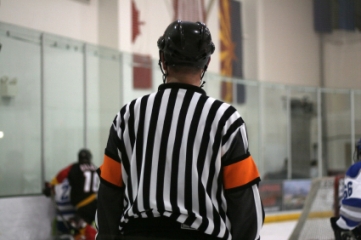Minnesota Hockey and the Minnesota State High school league increased the penalties for dangerous plays following the tragic life changing accident Jack Jablonski, a 16-year-old Benilde St. Margarets player, suffered in January of 2012. The question at hand now is should we continue with the stiffer penalties, modify them, add to them or return to the previous rule book? So far the consensus is to keep them and add to them.
It seems so simple, but as we learn in life nothing is simple. Perhaps we should look at the causes that are creating the current environment and then asertain if the penalties are warranted, are sufficient or need changing.
Minnesota Hockey has enhanced the penalties for checks from behind and boarding but not for contact to the head, which is a major penalty for high school hockey. The reason for the difference? Minnesota Youth Hockey District Directors felt that penalties for head contact would be unfair to bigger players when they hit (and hurt) smaller players. The state high school league went further with disqualification for these penalties and added open ice checks from behind, which include pushing! Wow. Thinking that USA Hockey and the National Federation of High Schools would follow suit was erroneous thinking.
Now there is considerable debate in Minnesota about what level of penalty should be assessed and is it fair to penalize not only the player but an entire team by forcing it to play short-handed for a full five minutes? Why not penalize dangerous play in this way? The reason is obvious: it would make it harder for the penalized team to win the game; thus the resistance to stiffer penalties.
Inconsistent officiating is also a problem. The USA Hockey rule book grants referees a great deal of discretion in calling these kinds of penalties. That's the problem in a nut shell.

Occam's razor suggests that the simplest solution is often times the best solution. In this case maybe if we enforced the existing rules as they are written we would not need to change rules that were not being enforced in the first place. Why do we think stiffer penalties will solve the problem? They won't. The problem is deeper and more fundamental: the combination of a win-at-all-cost attitude, a lack of on-ice training for players to teach them how to protect themselves when checked, and a resistence to rule change that would slow the game down a bit and reduce the number of hits.
The solution is not simple and not easy. With different leagues and governing bodies taking differing approachs to the problem, we will never get to the core of the problem. We are only applying a Band-Aid to a much bigger problem.
More on this subject in my next blog.



















